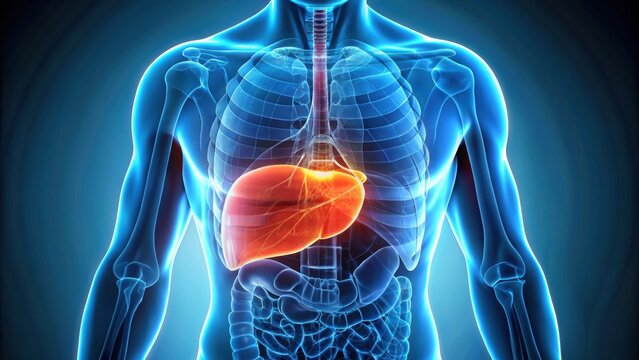Still Seeing Morning Glucose Spikes—Even When You Do Everything Right?
You’ve been diligent: balanced meals, no late-night snacks, meds on time. But every morning, the glucose meter tells a different story—a number that feels like a setback. You might wonder what you’re doing wrong. But often, it’s not a mistake. It’s something called the Dawn Phenomenon—your body’s natural rhythm waking you up with a blood sugar spike.
What Really Happens Overnight
In the early morning hours—typically between 3 and 8 a.m.—your body releases a set of hormones to help you wake up and feel alert: cortisol, glucagon, adrenaline, and growth hormone. These hormones signal the liver to release stored glucose into your bloodstream, giving you a natural energy boost.

If your insulin function is healthy, this process is barely noticeable. But if you're insulin-resistant or diabetic, your body can’t clear the sugar efficiently. So instead of a gentle rise, you wake up with fasting glucose levels that are higher than expected.
“Blood sugar naturally climbs overnight through hormonal signals,” notes the American Diabetes Association, emphasizing that the Dawn Phenomenon is a physiological event—not necessarily a sign of poor dietary control.
Why Your Evening Routine Matters
Dinner may be long gone by morning, but it still plays a part in how your body handles that early glucose surge. Meals high in refined carbs or sugars give the liver more fuel than it needs. When morning hormones activate, that excess is pushed back into circulation.

Sleep quality and stress levels also play key roles. Poor sleep can lead to higher cortisol and reduced insulin sensitivity. Chronic stress? Same story.
Contrast that with an evening meal like grilled fish, non-starchy vegetables, and some healthy fats. These nutrients are slower to digest and don’t flood your bloodstream with excess sugar. A short post-dinner walk can further help your muscles use up circulating glucose, improving overnight stability.
PPARs: Your Metabolic Middlemen

While insulin is the hormone that tells your cells to take up glucose, it's not working alone. Behind the scenes, your body relies on a family of cellular "managers" called PPARs—short for Peroxisome Proliferator-Activated Receptors.
There are three main types:
-
PPARα – active mostly in the liver, where it regulates fat metabolism and helps reduce lipid buildup
-
PPARγ – active in fat cells and muscles, where it controls how your body stores and uses glucose and fat
-
PPARδ – involved in energy balance and fat burning, especially in muscles
These receptors don't make insulin, but they influence how well your body responds to it. Think of them as the middle managers between insulin and your cells—translating the hormone's message into real action.
⠀
Why That Matters for Insulin Sensitivity?
When PPARγ is activated, several positive effects kick in:
-
It helps fat cells become better at storing excess energy, reducing fatty buildup in places it shouldn’t be (like the liver or pancreas).
-
It signals muscle and fat cells to become more responsive to insulin.
-
It calms chronic low-grade inflammation, which is a major driver of insulin resistance.
"PPARγ activation improves insulin sensitivity and reduces fasting plasma glucose."
— Cross-Talk between PPARγ and Insulin Signaling and Modulation of Insulin Sensitivity, PubMed Central, NIH
These are natural pathways the body already uses to maintain balance. Supporting them could be especially helpful for people facing metabolic challenges like prediabetes, type 2 diabetes, or stubborn weight gain linked to insulin resistance.
A Whole-Food Approach to Support

Unlike isolated compounds or synthetic alternatives, Crypto PPARs is a whole-food supplement derived from a patented strain of Chlorella sorokiniana (W87‑10). This unique algae is carefully cultivated and standardized to ensure consistency in its rich, naturally occurring nutrient profile.
It contains:
-
PPAR activators — including all three subtypes: PPARα, PPARγ, and PPARδ
-
Omega‑3 fatty acids — for cellular flexibility and inflammation support
-
Essential amino acids — the building blocks for tissue repair and metabolic enzymes
-
Chlorophyll and antioxidants — to combat oxidative stress and support detox pathways
Rather than targeting one pathway, Crypto PPARs offers a broad-spectrum nutritional synergy, supporting the natural systems your body already uses to regulate glucose, lipids, and inflammation.
This makes it an ideal choice for those seeking a gentle, food-based approach to metabolic health—especially when the goal is to support insulin sensitivity and rebalance nutrient intake in modern diets.
👉 Learn more about Crypto PPARs
🛒 Browse the catalogue
Reframing the Morning Spike

The Dawn Phenomenon isn’t a failure—it’s your body’s natural system trying to prepare you for the day. For people with diabetes or insulin resistance, understanding this rhythm allows you to work with your body, not against it.
A mindful evening routine and quality sleep form the foundation. But when those aren’t enough, nutritional strategies that support glucose regulation at the cellular level may offer additional help.

